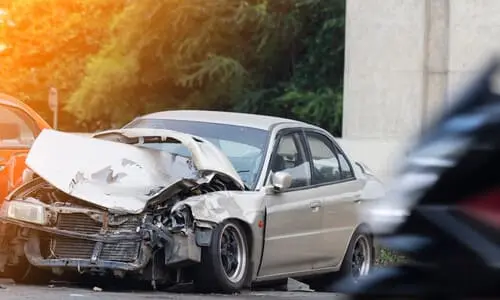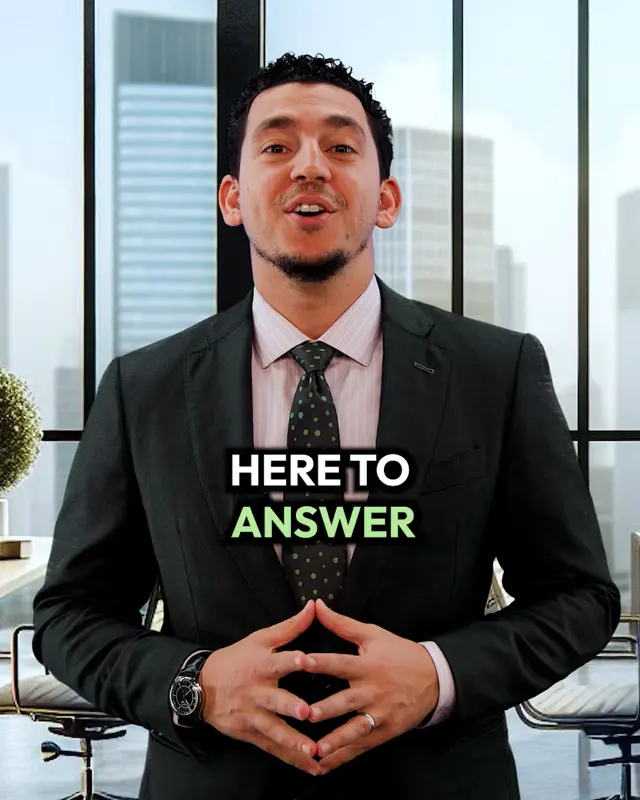
If a negligent driver causes an accident, you could suffer devastating injuries, leaving you out of work and struggling with medical bills for months. The at-fault driver and their insurance company might not be in any hurry to help you, but an experienced Stone Mountain personal injury lawyer may be able to pursue the compensation you deserve.
A Stone Mountain Car Accident Attorney Will Be on Your Side
It’s easy to feel overwhelmed after a car collision. You’re in pain, you need medical treatment, and even the best health insurance policies never seem to cover everything.
You might be unable to work, but all your regular bills are still there—along with an estimate for car repairs. You expect the at-fault driver’s insurance company to help, but the adjuster might try to blame you for the accident or undercut the value of your claim.
Fortunately, an experienced car accident lawyer can help you deal with all these setbacks. At the CEO Lawyer Personal Injury Law Firm, we’ll fight to prove the other driver was at fault, at least primarily, and work to establish a fair valuation of your damages.
There is no need to worry about upfront costs—your initial consultation is free, and you have no obligation. If you decide to proceed with our help, we won’t charge you anything until we win or settle your case.
Stone Mountain, Golf Carts, and Car Accidents
Stone Mountain is a “cart-friendly community,” allowing golf carts on city streets with an inspection permit from the city. If you want to drive a cart on the roads, it will need to meet certain requirements, including headlights, tail lights, brake lights, and turn signals.
However, you do not necessarily need to drive on the roads, as Stone Mountain offers a number of trails, some of which connect with the nearby park.
Golf cart drivers who do pass inspection and drive on the roads are required to obey the same traffic laws as vehicle drivers. You can be ticketed for speeding, reckless driving, or distracted driving while on a golf cart, and you can also be charged with a DUI.
Most of the time, vehicle and golf cart drivers share the roads responsibly and safely. But when a collision between a car and a golf cart does happen, the cart driver could suffer serious injuries.
Some people believe they can’t be severely hurt on a golf cart due to the low speeds, but this isn’t true for several reasons:
- You may be going at a low speed, but a negligent car driver could hit you at a much higher speed, increasing the risk and severity of injuries.
- Most golf carts lack seatbelts and doors, so you have a high risk of being ejected during an accident.
- Golf carts also don’t have airbags, so you have less protection than you would in a car.
What Happens if a Car Hits Your Golf Cart?
If the vehicle driver is at fault, we can seek restitution from their car insurance company. But as with any other car collision, the driver and/or their insurance adjuster may not want to accept responsibility.
Sometimes, the car driver claims the golf cart driver is at fault; they might say you ran a red light or stop sign or pulled out in front of them. Because golf cart drivers are bound by the same traffic laws as other vehicles, these are valid defenses if true.
However, it’s not unusual for two drivers involved in an accident to remember the facts differently. If the car driver or their insurance adjuster believes you were at fault, call a lawyer right away.
We will search for evidence to show what happened and build a strong case in your favor.
Georgia law also allows both parties to an accident to share fault, so it’s possible that both you and the car driver contributed to the crash. If so, you can seek damages so long as your percentage of fault is below 50 percent.
Any percent of fault attributed to you will be subtracted from your final award, so if you are 10 percent to blame, you will lose 10 percent of your recovery.
When insurance adjusters calculate fault, they sometimes overestimate the injured person’s contributions to the collision. The adjuster might, for example, decide you were actually 20 percent responsible—which could cost you thousands of dollars or more, depending on the amount of damages you have.
This is one reason why an experienced car accident lawyer can be helpful. If the adjuster’s estimate is inaccurate, we’ll review your accident details, gather more evidence if needed, and argue for a more equitable apportionment of fault.
What if a Golf Cart Driver Hits Your Car?
Fortunately, Stone Mountain requires golf cart owners to purchase liability insurance in the same amounts necessary to insure a motor vehicle—$25,000 per person for bodily injury liability and $25,000 for property damage. If we can show that the golf cart driver was at fault, we can seek to recover up to the policy limit for your injuries and car repairs.
Because golf carts are relatively small and usually don’t exceed 20 MPH, these minimum policies are typically enough to cover the car occupants’ injuries and property damage. However, if your damages do exceed the golf cart driver’s insurance limits, we may be able to seek compensation from the driver or your own insurance policy.
How Can You Prove Fault in an Accident With Two or More Motor Vehicles?
As in car/golf cart accidents, there is often disagreement about fault between the two car drivers. One or both drivers may have been speeding or distracted. They might have different ideas about who had the right of way or the light at an intersection.
Arguing with the other driver at the scene is not a good idea and can make your situation worse. In fact, we recommend that you don’t discuss fault with the other motorist at all.
Exchange insurance and contact info with the other driver, but don’t get into a conversation about who caused the accident. When the police arrive, you should answer their questions honestly, but again, you don’t have to speculate about fault.
You only have your own perspective on the collision and may not know all the facts, so keep your answers brief and to the point.
You should also take pictures at the scene—of the damage to both vehicles, of the road (particularly any tire marks or debris), and of the surrounding area. Try to get multiple angles and close-ups of any damage on your car.
Additionally, it’s a good idea to take photos of your injuries and be sure to seek medical attention—even if your injuries seem mild.
As soon as possible, contact a car accident attorney for assistance. We’ll review the police report and investigate further if necessary.
In some cases, we can find additional evidence to show who was at fault. Here are some examples:
- If you feel like you’re on camera everywhere you go these days, you may not be wrong. But this can be a good thing if your accident is captured on a doorbell, traffic, or security camera. Sometimes, a video of the collision may allow us to prove who had the right of way or who caused the crash.
- We will canvas the area where your accident happened to see if there are any additional witnesses. In some situations, we find people who saw the accident but weren’t present when the police arrived to take a report. Witness testimony can also be valuable in a car accident case.
- We’ll review photos from the accident scene for indications of the other driver’s speed and action. Tire marks, for example, might suggest a driver had little time to stop or that they swerved into another lane. We can follow up this analysis by looking at each car’s event data recorder or EDR data, which also contains information about speed, direction, and the driver’s efforts.
- When we suspect a distracted driver, we may request the driver’s smartphone records to learn if they were using the device at the time of the collision. Under Georgia law, motorists should not be touching or using their smartphone while driving, although hands-free calls are allowed.
What if a Tourist From Another State Causes an Accident?
Stone Mountain often sees tourist traffic coming or going from the nearby state park of the same name. Fortunately, liability insurance from another state should still be valid as long as the driver is merely visiting and has not actually moved to Georgia.
Most states do require liability insurance, but some have lower limits for minimum coverage, so it’s possible there may not be as much insurance available for your claim.
You could also be hit by an uninsured or underinsured driver from Georgia, where just over 12 percent of Georgia motorists are uninsured. At the same time, underinsured drivers from any state can be a potential problem if your accident is very severe and your damages exceed the limits of their policy.
The best solution to these situations is to invest in uninsured/underinsured motorist coverage (UM/UI), which Georgia insurance agencies are required to offer their customers. However, policyholders can refuse UM/UI.
While we understand the need to save money, we don’t recommend refusing a UM/UI policy because it could leave you unprotected in some accidents—especially severe ones.
It is possible to sue an uninsured or underinsured driver, but if they don’t have enough assets to cover your damages, you may not be able to collect. Occasionally, we can sue a third party, but this is not a possibility in most cases.
For this reason, UM/UI coverage is often the only way to recover compensation after an uninsured or underinsured motorist causes an accident. If you’re trying to reduce your insurance costs, consider getting quotes from multiple companies instead of turning down this crucial coverage.
What Happens When an Uninsured Motorist Strikes a Pedestrian or Bicyclist?
If the uninsured motorist is at fault and doesn’t have the financial resources to make a lawsuit feasible, we will usually turn to your UM/UI coverage. You do not have to be in your vehicle to use UM/UI when hit by an uninsured or underinsured motorist.
If you don’t have UM/UI on your policy, it’s still advisable to check with an attorney before you give up on recovering your damages. We’ll consider every option to pursue compensation, and in some cases, we may be able to sue the driver or another party.
If there’s a path to recovery, we’ll find it.
What Is the Best Way to Get Help From a Stone Mountain Car Accident Law Firm?
Don’t let the insurance company undervalue your claim or shift responsibility for the accident onto you. Contact the CEO Lawyer Personal Injury Law Firm as soon as possible for a free consultation about your case.
During your review, we’ll go over the police report, answer your questions, and outline the options for pursuing compensation. If you’ve received a claim denial or a lowball offer from the insurance company, we can also review it, and we may be able to appeal the denial or negotiate for a better settlement.
Attorney Ali Awad founded the CEO Lawyer Personal Injury Law Firm only a few years ago and has since made it one of the fastest-growing law firms in the country. He and his team have more than twenty years of combined experience in car accident cases and personal injury law and have recovered millions of dollars in compensation for injured people and their families.
In his spare time, Mr. Awad posts entertaining yet educational videos about legal topics for over a million followers on social media. Work with him today when you call (470) 323-8779.



